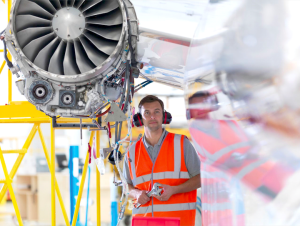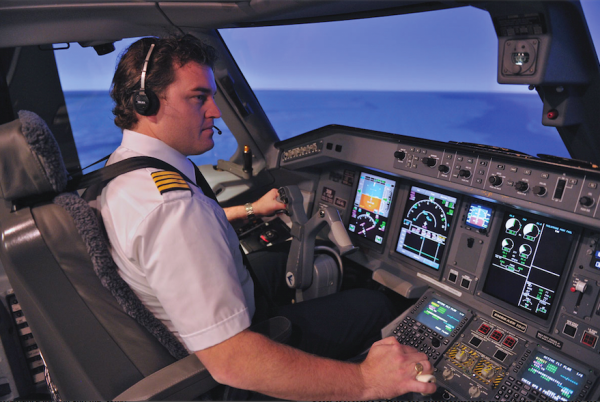You’re not the boss of me. . . (I think)
The owner, Pilot in Command, and the Director of Maintenance all share equally in the safe operation of an aircraft—but it’s complicated.
The question for today is: Are you sure you know the Federal Aviation Administration (FAA) Code of Federal Regulations (CFR) and their effect on your career as a Professional Aviation Maintenance Technician? Hmm …good question don’t ya think? Welcome back my faithful students! Whaddaya say that today we explore the exciting world of FAA regulations?
Now, for you students governed by Transport Canada Civil Aviation (TCCA) and/or European Aviation Safety Agency (EASA), the specifics of the regulations to which I will be referring may not match your regulation number. But, don’t turn that page yet! This will be an excellent learning experience for you and me. Why?
Well, I hope you will take the time to comment on today’s class presentation, and share your thoughts on how the TCCA or EASA compares and/or differs in their management of the same data. Let’s put some life into these tedious and sometimes mind-numbing procedures the governments manufacture to keep our air transportation safe. Okay? Great! So now, with all that being said, let’s start with some Cocktail Knowledge (CK) that was the inspiration for today’s lesson.
Did you know that the maintenance title of Director of Maintenance for a business aircraft owner, operating under (CFR) Title 14 Part 91, is not a job recognized by the FAA? Yeah, I was a little surprised when I read that too. I got this nugget of CK, from an article written by Sarah MacLeod. For those of you who might not be familiar with Ms. MacLeod, let me provide a short introduction. She is the Executive Director of the Aeronautical Repair Station Association (ARSA), an attorney, and is globally recognized as an expert in aviation regulatory compliance.
So understanding that Ms. MacLeod for sure knows her stuff, I became curious about this apparent absence of maintenance oversight by a maintenance professional and thus the genesis of today’s class topic: Are you sure you know the regulations?
So, thank you Sarah for sparking this discussion. And trust me, as part of our discussion today we will delve into Part 91 regulations a little later in class to find out if the FAA really forgot about the maintenance professional for those flying exclusively under Part 91.
But for now how ‘bout we start with some background on the Federal Regulations governing our lives as aviation professionals. Did you know that under the Code of Federal Regulations, Title 14 there are five volumes, six chapters and 1,399 parts that deal specifically with Aeronautics and Space transportation? And today we are going to review and discuss each one of them. Just kidding! I wouldn’t do that to you. Heck, I wouldn’t do that to me. However, of those regulations under Title 14, the volumes which we (the pilots and maintainers of aircraft within the earth’s atmosphere) are mostly concerned with, are located in volumes 1, 2 and 3; chapter I; Parts 1-199. And today I will introduce you to that group and then for good measure we will talk in detail about a few of the more “interesting” parts.
Volume 1, Parts 1-59 are divided accordingly: Subchapter A, Parts 1-3 has to do with definitions; Subchapter B, Parts 11-17 deals with procedural rules; Subchapter C, Parts 21-49 addresses aircraft, which includes certification of parts, airworthiness standards, maintenance… etc. Parts 50-59 are reserved for future use.
Volume 2 Parts 60-77 are divided accordingly: Subchapter D, Parts 60-67 deals with certification for airmen (pilots, mechanics and crewmembers); Subchapter E, Parts 71-77 has to do with designation of airspace for flight; Subchapter F, Parts 91-105 speaks to air traffic and general operating rules for aircraft. Parts 106-109 are reserved.
Volume 3 Parts 110-198 are divided accordingly: Subchapter G, Parts 110-139 deals with air carriers, and operators for compensation or hire and certification and operations; Subchapter H Parts 140-147 talks about Mechanic and Pilot schools, training centers and repair stations; Subchapter I Parts 150-169 deals with all things about commercial
Airports; Subchapter J, Subchapter 170 and 171 handles the Navigational Facilities; Subchapter K, Parts 183-193 Administrative Regulations; Subchapters L-M are reserved for, (God forbid) more regulations; and Subchapter N, Part 198 explains about Aviation Insurance and Part 199 is reserved.

Under the Code of Federal Regulations, Title 14 there are five volumes, six chapters and 1,399 parts that deal specifically with Aeronautics and Space transportation. Of those regulations under Title 14, the volumes which pilots and maintainers of aircraft are mostly concerned with are located in volumes 1, 2 and 3; chapter I; Parts 1-199. This issue of AMU will introduce readers to that group, and will include a more detailed look at a few of the more “interesting” parts.
So there you have it. That wasn’t so bad now was it? And, as you will see, the regulations all intermesh with respect to the governance of our industry. And, since we don’t have the time or the fortitude required to get into depth on each of the Parts, I have selected a couple of the more interesting for our discussion today. Don’t laugh, I saw you before when I said “interesting parts”. Really, there are some interesting regulations in this group, particularly the info about Subpart 91. Before we get too far along, I want to address a couple of things.
First: for the sake of this article I may abbreviate the content of the subparts we will be discussing. So I suggest that you visit the FAA website www.faa.gov. Navigating to the regulations is very simple.
Next: In place of the word “Subchapter” I am going to use the symbol “§” Now, as promised, let’s begin Part 91 and get this Director of Maintenance issue settled. As we know Part 91 contains the general operating and flight rules. As §91.1 prescribes, this section contains the rules governing the operation of aircraft — except moored balloons, kites, unmanned rockets and unmanned free balloons, which are governed by Part 101 of this chapter — and ultralight vehicles which are operated within Part 103 of this chapter) within the United States, which includes the waters within three nautical miles of the U.S. coast. Okay? So let’s get specific about who has the maintenance authority.
§91.3 (a) “The pilot in command of an aircraft is directly responsible for, and is the final authority as to the operation of that aircraft.” That seems reasonable right?
§91.7 (a) “No person may operate a civil aircraft unless it is in an un-airworthy condition.” Okay that too seems reasonable. (b) “The pilot in command of a civil aircraft is responsible for determining whether that aircraft is in condition for safe flight. The pilot in command shall discontinue the flight when un-airworthy mechanical, electrical, or structural conditions occur.” So the pilot is the guy who makes the decision about the condition of the aircraft. So the pilot doesn’t need a technician’s input or approval? Oh yes they do! Read on.
§91.405 “Each owner or operator of an aircraft: (a) shall have that aircraft inspected as prescribed in Subpart E of this part — Subpart E is the section of Part 91 that deals with maintenance, preventive maintenance and Alterations — and shall between required inspection except as provided in paragraph (c) of this section, have discrepancies repaired as prescribed in §43 of this Chapter; (b) shall ensure that maintenance personnel make appropriate entries in the aircraft maintenance records indicating the aircraft has been approved for return to service…”
All right! Finally after sifting through the regulations we are addressing maintenance for §91 operations. §43 deals with maintenance. So let’s keep digging; don’t lose hope we are getting close.
§91.407: Operation after maintenance, preventive maintenance, rebuilding, or alteration. (a) “No person may operate any aircraft that has undergone maintenance, preventive maintenance, rebuilding or alteration unless (1) it has been approved for return to service by a person authorized under §43.7 of this chapter…”
Okay, so what does §43.7 say? This regulation states who is authorized to approve aircraft, airframes, aircraft engine, propellers, appliances, or component parts for return to service after maintenance, preventive maintenance, rebuilding or alteration. They are as follows:
1. The holder of a mechanic certificate or Inspection Authorization as provided in §65;
2. A repair station as provided in §145;
3. A person holding at least a private pilot certificate may approve an aircraft for return to service after performing preventive maintenance only under the provisions of §43.3(g)
4. The Administrator (FAA)
5. A Manufacturer may approve for return to service any aircraft, airframe, aircraft engine, propeller, appliance, or component part which that manufacturer has worked on under §43.3(j).
So after this walk through Parts 91 and 43 do you now think that the Pilot in Command (PIC) is really the final authority? Well, yes and no. Under the parts of 91 and 43 addressed here, the maintenance personnel must ensure the work is performed correctly and annotated accurately in the aircraft records. The Director of Maintenance can release the aircraft to service. However, it is the owner/operator’s/ PIC’s responsibility to determine the airworthiness of the aircraft for the purposes of air navigation.
Thus, as you can see from a regulatory perspective, the owner/operator/PIC and the Director of Maintenance share equally in the safe operation of the aircraft, through a somewhat convoluted set of regulations.
Okay had enough? Hopefully our short visit with the title 14, Code of Federal Regulations will wet your appetite to investigate these FAA guidelines on your own. To get you started, for homework I want you to look up §43.3(g) & (j); §145, (The section dealing with Repair Stations). This will be a good exercise for you.

While you are at it take a look at §65 Certification: Airmen other than flight crewmembers § D Mechanics. Specifically §65.81: General privileges and limitations; and §65.91 Inspection Authorization (IA). This will be a good review as to what a Certified Mechanic (A&P) is authorized to do and when an IA is required.
And, in closing, let me leave you with this little tidbit of interesting regulatory CK. In Subchapter G – Aircarriers and Operators for compensation or hire: certification and Operations §120 Drug and Alcohol Testing Program.
§120.105: Employees who must be tested.
Each employee, including any assistant, helper, or individual in a training status, who performs a safety-sensitive function listed in this section directly or by contract (including by subcontract at any tier) for an employer as defined in this subpart must be subject to drug testing under a drug testing program implemented in accordance with this subpart. This includes full-time, part-time, temporary, and intermittent employees regardless of the degree of supervision. The safety-sensitive functions are:
(a) Flight crewmember duties
(b) Flight attendant duties
(c) Flight instruction duties
(d) Aircraft dispatcher duties
(e) Aircraft maintenance and preventive maintenance duties
(f) Ground security coordinator duties
(g) Aviation screening duties
(h) Air traffic control duties
Do you see anything in this regulation that says, “the assembler of a new engine, component or aircraft?” You are right; it is not in there. According to the FAA those jobs are “not safety sensitive”… Now, just to put your mind at ease, I would say that the major Original Equipment Manufacturers (OEM) have implemented their own company sponsored drug and alcohol program. But it is NOT under FAA oversight.
So with that I will sign off and as always I appreciate your attention during the presentation. See you next time. Class dismissed!
About The Author
Mike Broderick is V.P. of Business Development at Helicopter Engine Repair Overhaul Services (HEROS). Over the past 35 years, he has served as a shop technician, engine shop supervisor, Engine Program Director, Director of Maintenance, Director of Operations, and owner of a Rolls-Royce engine overhaul and MD Helicopter component overhaul shop. He is a certified A&P, and holds a Bachelor of Science degree in Aviation Administration. As well, Mike has been appointed as an FAA representative for the FAA Safety Team (FAAST) and is a member of the HAI Tech Committee. Mike is a regular contributor to Air Maintenance Update.
View all articles by Mike Broderick.















































